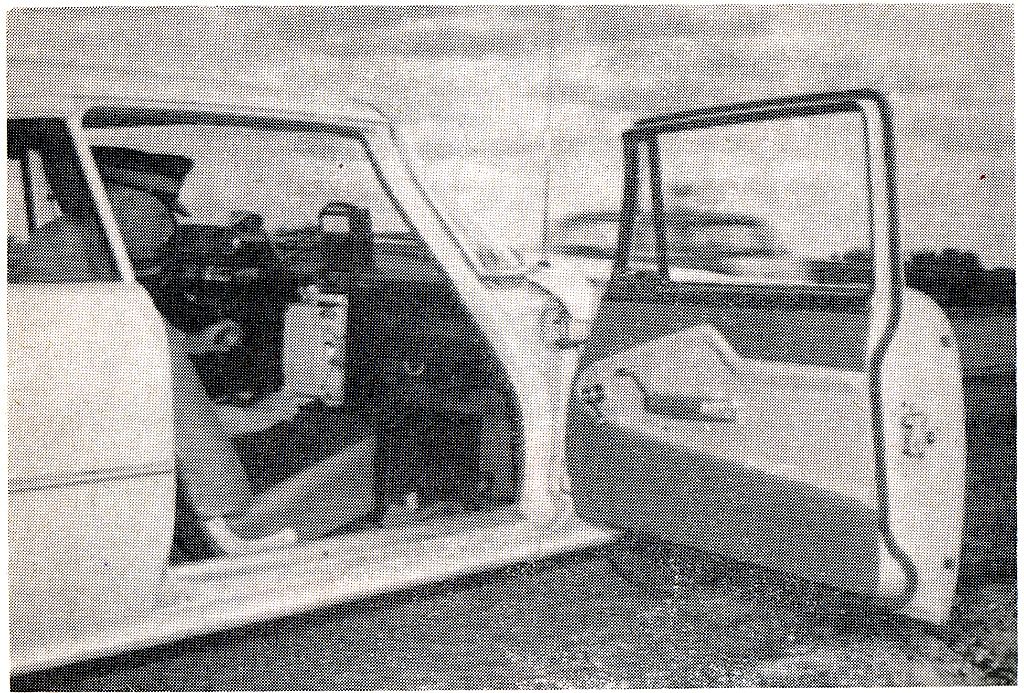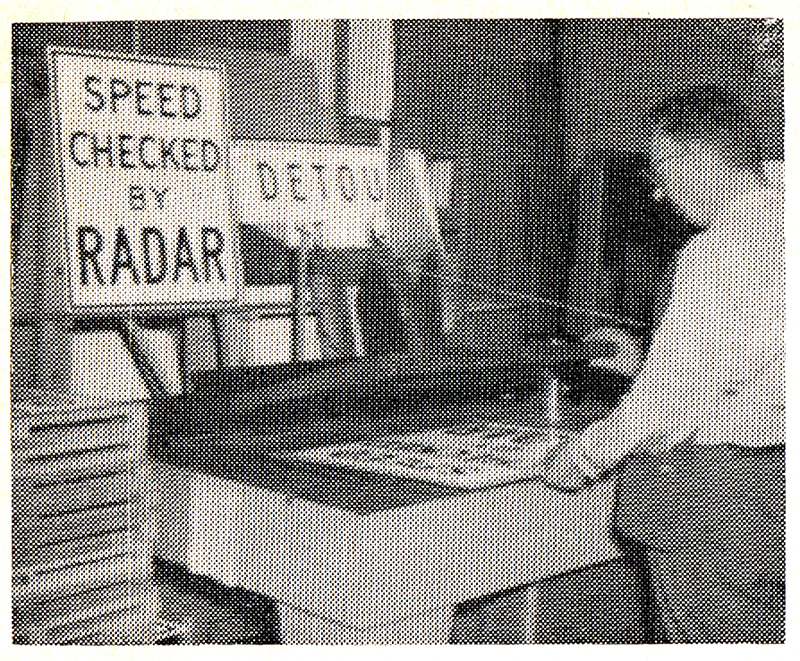
June, 1960: A speeding R.C.M.P. car is barely visible behind the open door of this patrol car as the radar equipment is demonstrated. The R.C.M.P. constable is preparing to radio ahead to stop the speeder, which was clocked at 72 miles per hour by the radar unit.
Manitoba became the eighth Canadian province to make use of radar equipment in the control of highway traffic speeding when radar units began operation on Manitoba highways June 6. The seven other provinces policed by Royal Canadian Mounted Police already had the radar equipment in use.
MOTOR IN CANADA, along with daily newspapers and radio stations in Winnipeg, were invited to a special demonstration of the radar equipment last month, prior to it being put into service on major provincial highways. RCMP officials explained the operation of the equipment and Hon. Sterling Lyon, Q.C., attorney-general for Manitoba, made the official announcement of the province’s decision to use radar.
The radar units are being operated on 11 major highways in Manitoba. They will see service on the Trans-Canada highway, as well as provincial trunk highways 3, 4, 6, 8, 9, 10, 12, 15, 59 and 75.

Mr. Lyon said the use of radar was not intended as a “speed trap,” but rather to enforce safe speed laws, as a means of preventing highway accidents. He announced that Manitoba motorists would be given a “month of grace” during June, when warning tickets would be issued, rather than convictions. Signs are being placed on highways concerned to inform motorists that radar equipment might be in use.
Though the operation of radar is not new to most of the other provinces, this brief explanation of the equipment might be of interest to all:
The radar equipment consists of three parts — a “transceiver”, a speed indicator and a recorder.
The “transceiver” is a small box that operates as both a transmitting station that beams microwaves and a receiving station that receives the “bounce” from moving vehicles. Placed at the side of the road, it can determine the speed of vehicles both coming toward it and going from it.
The speed indicator, set up on the dash of the RCMP car, is attached to the “Transceiver” by wire and translates the electrical impulses into miles per hour.
The recorder, also attached by wire to the “transceiver”, permanently records the vehicle’s speed on a moving graph.
Once the equipment is set up, it records the speed of every vehicle passing through the radar beam. When a speed violation is recorded, an RCMP officer radios to another RCMP car located down the road and within sight of the radar-equipped car to stop the speeder. The radar equipment also has a built-in “tolerance” of two miles per hour in favor of the vehicle involved.
With radar in use in Manitoba for enforcement and, particularly, as a deterrent, the incidence of traffic accidents caused by excessive speeds is expected to be sharply reduced, Mr. Lyon said.